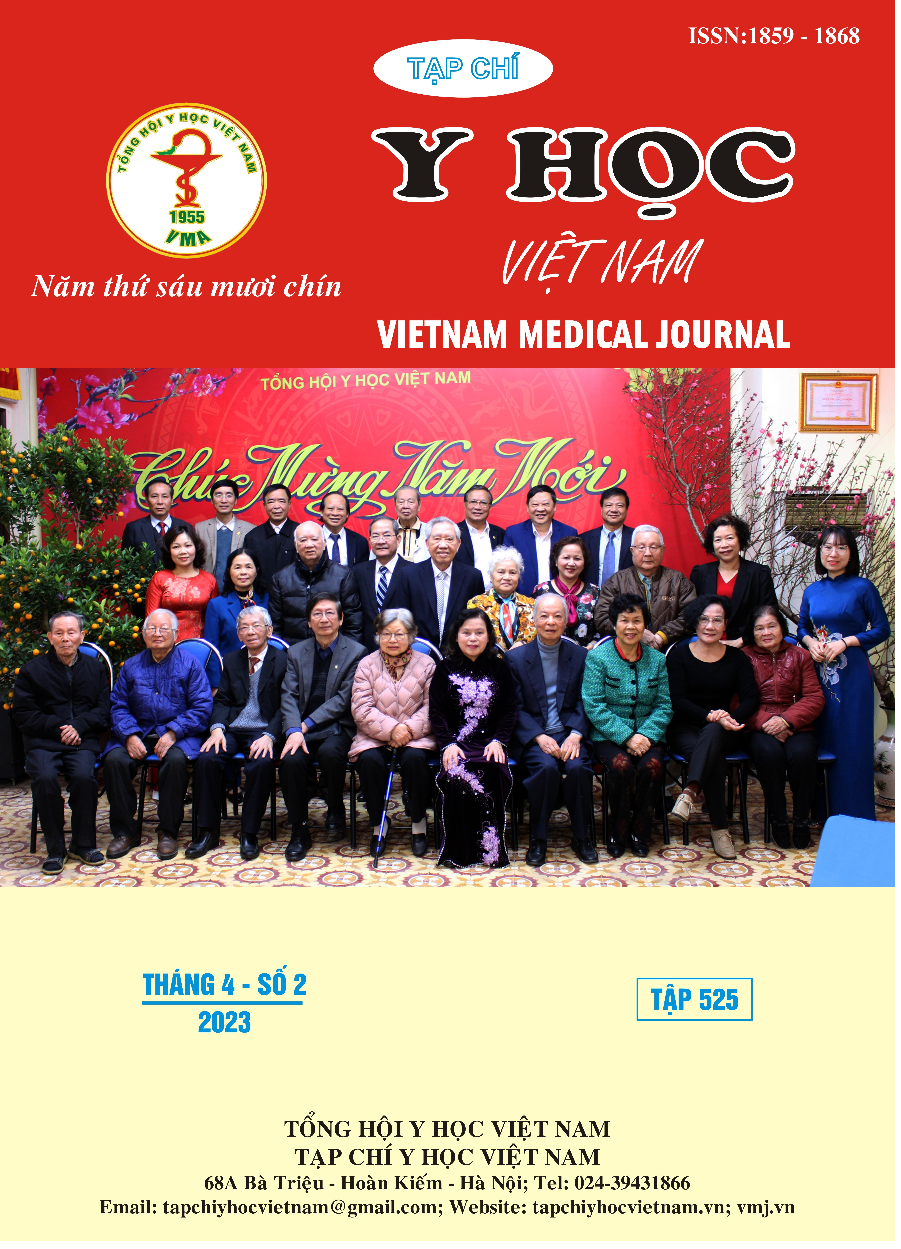PSYCHIATRIC DISTURBANCE AND HIV STIGMA AMONG ADULTS EXPOSED TO HIV AND RELATED FACTORS
Main Article Content
Abstract
Introduction: Acute psychological symptoms including stress, anxiety, and depression are common after HIV exposure. On the other hand, HIV/AIDS stigma contributes significantly to HIV/expose patients` mental status. These will lead to them not accepting HIV testing, not complying with treatment. making it difficult to prevent HIV control. However, there is not much research on mental health and HIV stigma among HIV exposure adults. Research objectives: To determine the rate of psychiatric disturbance and HIV stigma among adults exposed to HIV; To compare the differences in psychiatric disturbance, HIV stigma between groups of adults exposed to HIV; To explore the relationship between psychiatric disturbance and HIV stigma, demographic characteristics. Subjects - Research methodology: 145 people aged 18 years and over, after HIV exposure (occupational and community exposure) came to a hospital for tropical diseases, receiving PEP treatment. Most of the subjects were male, accounting for 79.3% (n = 115), the main exposure situation was outside the community 82.8% (n = 120) due to the main reason being unsafe sex, 57.5% (n = 83). Study design: cross-sectional description, purposive convenience sampling. Results: The rate of psychiatric disturbance in adults after HIV exposure was 20% (n = 29) with the probability of female was higher than that of male (OR = 0.279, CI 95% = 0.108 - 0.722, p < 0.05), HIV stigma had a tendency to impact on participants` psychiatric disturbance (OR = 1.066, p = 0.057). The responders found HIV stigma with the mean of 2.22. In which, the stigma related to the domains "Disclosure concerns", "Negative self-image", "Concerns about public attitudes" with the mean were 2.44; 2.28; 2.13, respectively, considering high; for the domain "Personalised stigma", there was low discrimination (mean = 2.02). Participants with unsafe sexual behaviors had the mean stigma score of 2.33 higher than that of the group of injuries caused by needle stick/contact with blood, secretions 2,07 (p < 0.05). Conclusions – Recommendations: 20% of participants who exposed HIV had psychiatric disturbance with the probability of female was higher than that of male, HIV stigma had a tendency to impact on participants` psychiatric disturbance. They felt the disease stigma through the three domains of "Disclosure concerns", "Negative self-image", "Concerns about public attitudes”; did not feel Personalised stigma. From the results, the following issues need to be implemented in order to reduce the psychological burden on post-HIV-exposure people: widely disseminating updated knowledge about HIV/AIDS and advanced treatment methods, strengthening media and health education to raise awareness and safe sex behavior in the community, providing in-depth and individualized post-exposure HIV counseling for exposed subjects.
Article Details
Keywords
Stigma, psychiatric disturbance, HIV exposure
References
2. Lê Xuân Huy, Dương Công Thành, Đỗ Thái Hùng và cộng sự. Kỳ thị và phân biệt đối xử: Thực trạng của người nhiễm HIV tại tỉnh Khánh Hoà. Tạp chí Y học dự phòng tập 25. 2016; 9 (182):1-8
3. Võ Hoàng Sơn. Nhận thức về HIV/AIDS và thái độ kỳ thị của người dân cộng đồng đối với trẻ em bị ảnh hưởng bởi HIV/AIDS: nghiên cứu tại Quận 8 và Quận Bình Thạnh, thành Phố Hồ Chí Minh. Tạp chí Khoa học đại học Đà Lạt. 2018; 8(4):11-21. https://doi.org/10.37569/DalatUniversity.8.4.362
4. Agata Giza. Psychosocial consequences of medical staff occupational exposures. HIV AIDS Rev. 2004; 3(1):1-4
5. Beusenbergand M., Orley J. World Health Organization, A User'sguide to the self reporting questionnaire (SRQ). Division of Mental Health. 1994; 1-73
6. Carley J. Mendonca, Toby R. O. Newton John, Dion M. Alperstein, et al. Quality of Life of People Living with HIV in Australia: The Role of Stigma, Social Disconnection and Mental Health, Original paper. 2022; 1-13, https://doi.org/10.1007/s10461-022-03790-7
7. Charles K, Hermine M, Sameuel N C., et al. Non-Occupational HIV Post-exposure Prophylaxis: A 10-Year Retrospective Review of Data Following Sexual Exposure From Yaounde Central Hospital, Cameroon”, Int J MCH AIDS. 2019; 8(2);138-145
8. Doris S F Y, Diana T F L, Jean W. Issues and challenges of instrument translation. Western journal of nursing research. 2004; 26 (3): 307-320
9. Earnshaw VA, Smith LR, Chaudoir SR, Amico KR, et al. HIV stigma mechanisms and well-being among PLWH: a test of the HIV stigma framework. AIDS Behav. 2013; 17(5):1785-1795.
10. Ekama S.O., Gbajabiamila T.A. Pattern and Rate of Occupational and Non-Occupational Exposures: The Experience of a Major HIV Treatment Centre in Nigeria”, Article no. JAMMR. 2017; 23 (12):1-7


